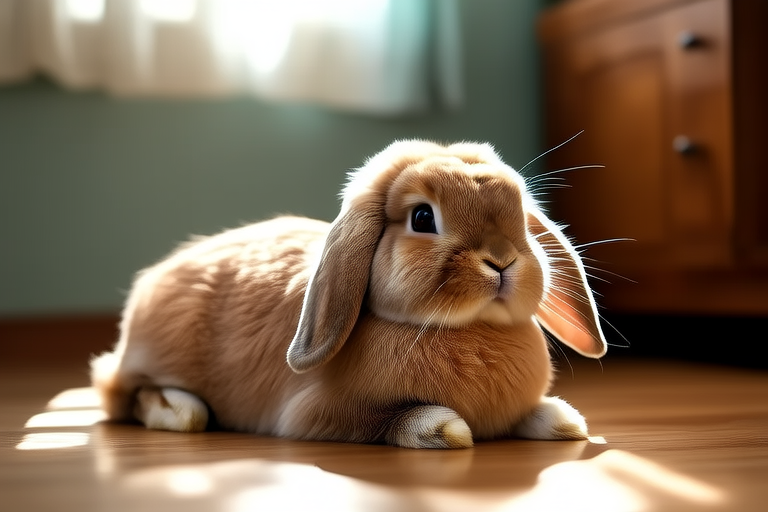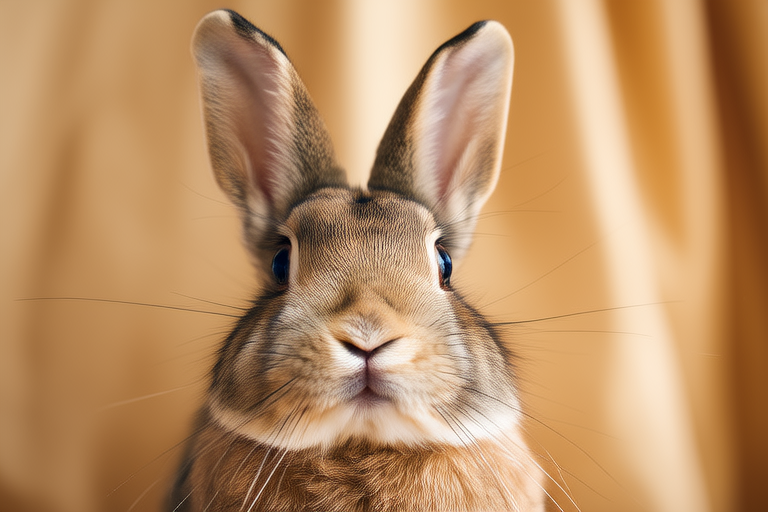
From Couch Potato to Star Pet: The Ultimate Guide to Lop Rabbit Care
Welcome to the wonderful world of lop rabbits! These charming, floppy-eared creatures have become one of the most popular pet choices for families and individuals alike. With their gentle nature and endearing appearance, it’s no wonder why they’re often referred to as ‘couch potatoes.’ However, with proper care and attention, your lop rabbit can easily transform into a lively and active ‘star pet.’ This comprehensive guide will walk you through everything you need to know about caring for your lop rabbit, ensuring both you and your furry friend enjoy a fulfilling life together.
Understanding Lop Rabbits
Lop rabbits are a breed known for their long, drooping ears that can reach up to 8 inches in length. Their soft, plush coats come in a variety of colors, making them visually appealing. There are several types of lop rabbits, including English Lops, French Lops, and Miniature Lops. Each type has its own unique characteristics, but they share similar temperaments and care requirements. Lop rabbits are generally calm, affectionate, and easy to handle, which makes them ideal pets for children and adults.
Diet: The Foundation of Health
Proper nutrition is crucial for maintaining your lop rabbit’s health. A balanced diet should consist primarily of hay, fresh vegetables, and a limited amount of pellets. Timothy hay or orchard grass hay should make up the bulk of your rabbit’s daily intake. This ensures they get the necessary fiber for digestive health. Fresh vegetables like carrots, bell peppers, and leafy greens provide vitamins and minerals. Pellets should be offered in moderation to avoid obesity. Always introduce new foods gradually to prevent digestive upset.
Housing: Creating a Comfortable Home
A suitable living environment is essential for your lop rabbit’s well-being. They should have access to a spacious cage or enclosure that allows ample room for movement. The cage should be large enough for your rabbit to stretch out fully and stand on their hind legs without touching the top. Line the bottom of the cage with absorbent bedding such as paper-based products or recycled newspaper pellets. Regular cleaning is vital to maintain hygiene and prevent odors. Providing hiding spots, tunnels, and toys within the enclosure will stimulate mental and physical activity.
Exercise: Encouraging Activity
While lop rabbits may seem content lounging around, regular exercise is important for their overall health. Allow your rabbit supervised time outside of their cage each day. A secure, rabbit-proofed area in your home or yard provides a safe space for exploration and play. Exercise not only helps maintain a healthy weight but also prevents boredom, reducing the risk of destructive behaviors. Interactive toys and activities can further engage your rabbit mentally and physically.
Grooming: Maintaining Your Rabbit’s Appearance
Grooming plays a significant role in keeping your lop rabbit looking and feeling their best. Regular brushing helps remove loose fur and prevents matting. The frequency of grooming depends on the length and texture of your rabbit’s coat. Short-haired breeds may require less frequent brushing compared to longer-haired varieties. Bathing should be done sparingly, typically only when absolutely necessary, as rabbits are naturally clean animals. Trimming nails and cleaning ears are other important grooming tasks that should be done regularly.
Socialization and Training: Fostering Good Behavior
Socializing your lop rabbit early on helps build trust and encourages positive interactions. Spend quality time with your rabbit daily, offering treats and praise during handling sessions. Positive reinforcement techniques, such as clicker training, can be used to teach basic commands and tricks. Patience and consistency are key when training your rabbit. Reward desired behaviors with small, healthy treats and gentle petting. Avoid punishment, as it can lead to fear and aggression. Socialization also extends beyond human interaction; introducing your rabbit to other pets in a controlled manner can enrich their social experiences.
Health Maintenance: Preventing Common Issues
Regular veterinary check-ups are essential for monitoring your lop rabbit’s health. Common health issues include dental problems, respiratory infections, and gastrointestinal disorders. Providing a balanced diet, appropriate exercise, and routine dental care can help prevent many of these conditions. Signs of illness to watch for include loss of appetite, lethargy, discharge from eyes or nose, and changes in litter box habits. Early detection and treatment are critical for successful outcomes.
Transforming Your Lop Rabbit from Couch Potato to Star Pet
With consistent effort and attention, your lop rabbit can transition from a seemingly inactive ‘couch potato’ to an active and well-behaved ‘star pet.’ By providing a stimulating environment, encouraging exercise, and fostering positive social interactions, you’ll witness your rabbit’s natural curiosity and playfulness come to life. This transformation is not only beneficial for your rabbit’s physical health but also enhances their emotional well-being, creating a stronger bond between you and your pet.
The Rewarding Experience of Owning a Lop Rabbit
Owning a lop rabbit is a rewarding experience filled with joy and companionship. These affectionate creatures bring warmth and laughter into our lives while teaching us valuable lessons about responsibility and compassion. As you embark on this journey of caring for your lop rabbit, remember that patience and dedication are key. Embrace the challenges and celebrate the successes along the way. Together, you and your lop rabbit will create lasting memories and form an unbreakable bond.






